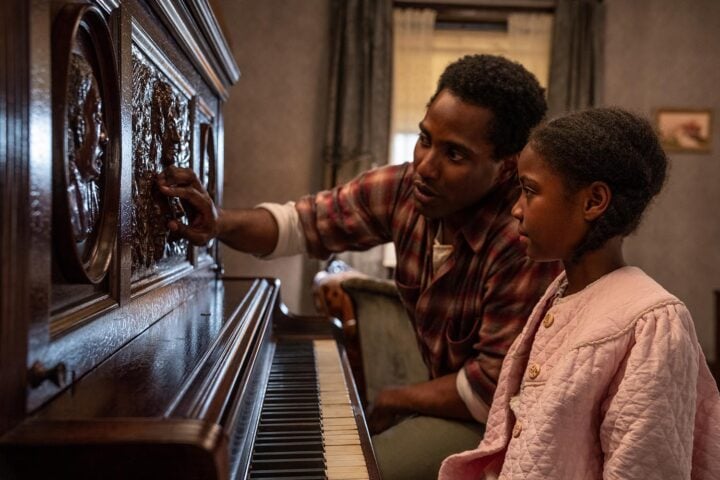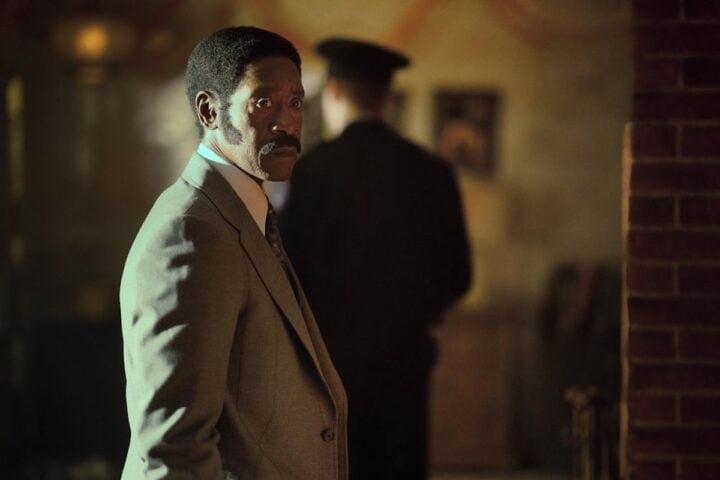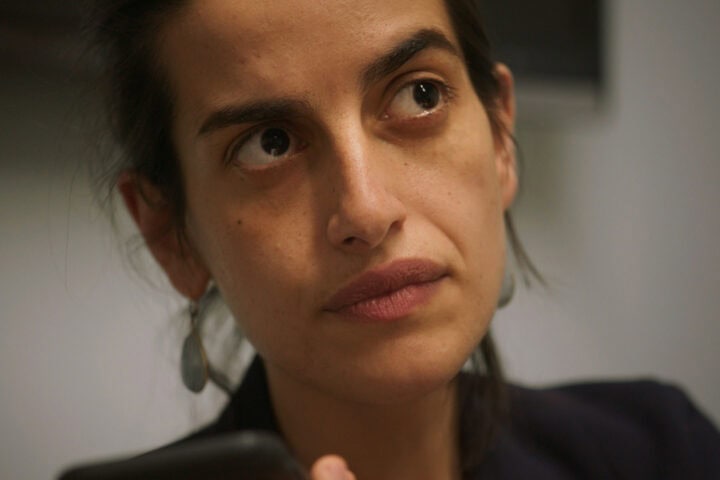Ten films and 10 seasons of television in the Marvel Cinematic Universe have been released in the four years since mega-powered space marine Carol Danvers (Brie Larson) was introduced in Captain Marvel and played a significant role in Avengers: Endgame. And to say that all of that has made her feel like an afterthought would be an understatement.
Carol makes her belated return to the MCU in Nia DaCosta’s The Marvels, but the threads left dangling by Captain Marvel are completely sidelined in favor of an ensemble story that saddles our lone-wolf superhero with two sidekicks: Kamala Khan, a.k.a. Ms. Marvel (Iman Vellani), and Monica Rambeau (Teyonah Parris), the now-adult daughter of Carol’s late friend Maria. And because these characters’ backgrounds have been explored in Marvel’s TV universe, you’ll need to have studied up on the ever-proliferating MCU to have any remote understanding of them.
These characters get thrown together through a strange side effect caused by wormholes torn into the fabric of space by Dar-Benn (Zawe Ashton), a member of the alien Kree Empire whom Carol fought in Captain Marvel. Carol, Monica, Kamala all have similar superpowers of light manipulation, and when they use their abilities at the same time, they switch places with each other. One of the knocks on contemporary superhero movies is that no matter who a given protagonist is, the films always boil down to demigods firing energy beams out of their hands and eyes, and The Marvels makes this homogeneity an active plot point uniting its co-leads.
From the outset, the film’s erratic plotting underscores just how unwieldy Marvel Studios’s interwoven yet individually under-baked shows and movies have become. Captain Marvel concluded with Carol heading into space to find a permanent home for the refugee Skrull race displaced by Kree imperialism, and the plight of the Skrulls in the wake of that catastrophe was explored, sans Carol, in the recent Disney+ Secret Invasion series. Instead of building on Carol’s first appearance, The Marvels gives her a new backstory (and ties to Dar-Benn) via flashbacks to adventures heretofore unseen in any prior MCU film or TV show.
All that further hampers Carol’s much-needed character development, turning a chance to watch her grow into a waiting game to figure out the basic context of her reintroduction. Similarly, Kamala and Monica feel like hastily inserted sidekicks, with the latter’s feelings of being abandoned as a child by Carol shoved to the margins so as to leave extra room for Kamala to geek out at Captain Marvel. It’s just the latest example of IP-driven blockbusters inserting an audience surrogate into a story for the sake of extolling fandom.
Also frustrating is the film’s action. The heroes’ constant teleporting between their respective locations is a promising gimmick, particularly in the first half when each of the three main characters occupies a different space. But one early fight that sends the women and a batch of Kree soldiers careening between a Kree warship, a space station above Earth, and Kamala’s living room swiftly loses all sense of rhythm as clunky editing turns an already chaotic premise of people swapping locations every few seconds into an incomprehensible jumble. Only in the film’s climax, when the heroes are in the same confined area and can thus better calibrate their constant shifts in position, does the action attain a logical sense of movement and timing. By then, though, the greatest potential of visual frenzy has been lost.
And yet, in spite of all those issues, something in The Marvels notably shifts when it reaches the halfway point and begins to bring everything into a focus that’s all but disappeared from the vast majority of post-Endgame MCU films and television shows. Revelations about the nature of Carol’s connection to Dar-Benn, and her extended time away from Earth, complicates our impression of Marvel’s unstoppable might and aloofness. The Marvels foregrounds Carol’s critical on-screen weakness, her emotional two-dimensionality, and finally gives her depth by unpacking why she’s felt so one-note as a character up to this point in the MCU.
Elsewhere, Kamala’s annoying, fannish behavior gradually gives way to a more enjoyable sense of optimism that spreads to the other two heroes. This gives the final act of The Marvels more warmth and camaraderie than any previous Marvel film as the women learn how to cooperate and connect with each other. Taken alongside the visual coherence and cleverness of the previous action sequence, this earnestness makes for one of the precious few contemporary Marvel movies—or DC ones for that matter—that ends far stronger than it starts.
After four years and a glut of content in the wake of Endgame that’s struggled to give Marvel Studios a sense of purpose, The Marvels offers concrete narrative and tonal signposts that could serve as a guide for the next few MCU phases. Much of the overriding story linking Iron Man all the way through Endgame was defined by the spiraling catastrophe of Tony Stark’s inability to learn from his mistakes, but here, Carol owns up to the unintentional consequences of her hubristic attempts to make the universe a safer place without considering the full impact of her actions. In turn, she learns to make things right by trusting the advice and talents of women she views not as uneasy allies but genuine friends. This, far more than the clumsy attempts to set up Kang the Conqueror as the next big existential threat to the universe, is the most exciting and compelling thing to happen to Marvel in a very long time.
Since 2001, we've brought you uncompromising, candid takes on the world of film, music, television, video games, theater, and more. Independently owned and operated publications like Slant have been hit hard in recent years, but we’re committed to keeping our content free and accessible—meaning no paywalls or fees.
If you like what we do, please consider subscribing to our Patreon or making a donation.






marvel movies are the best